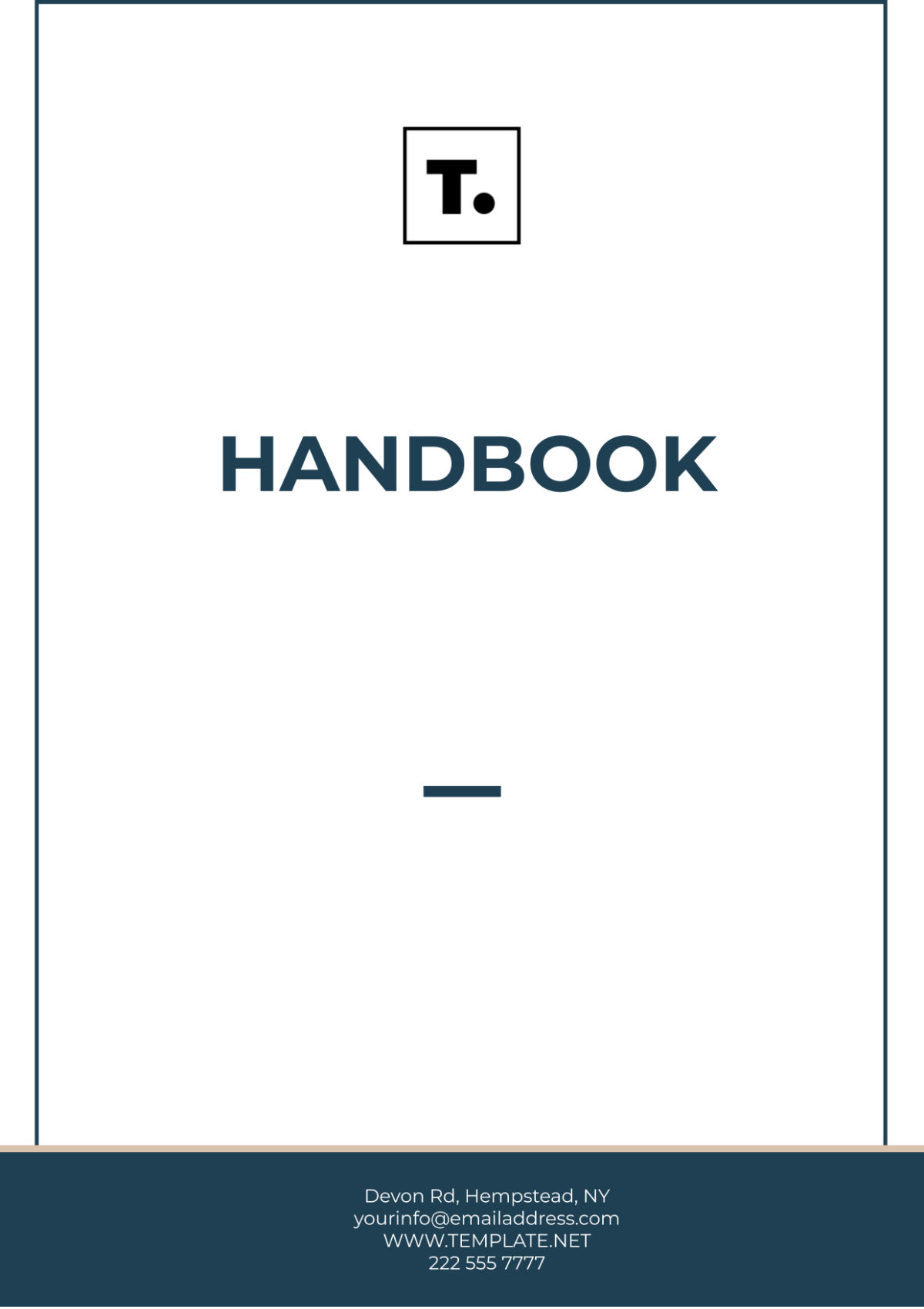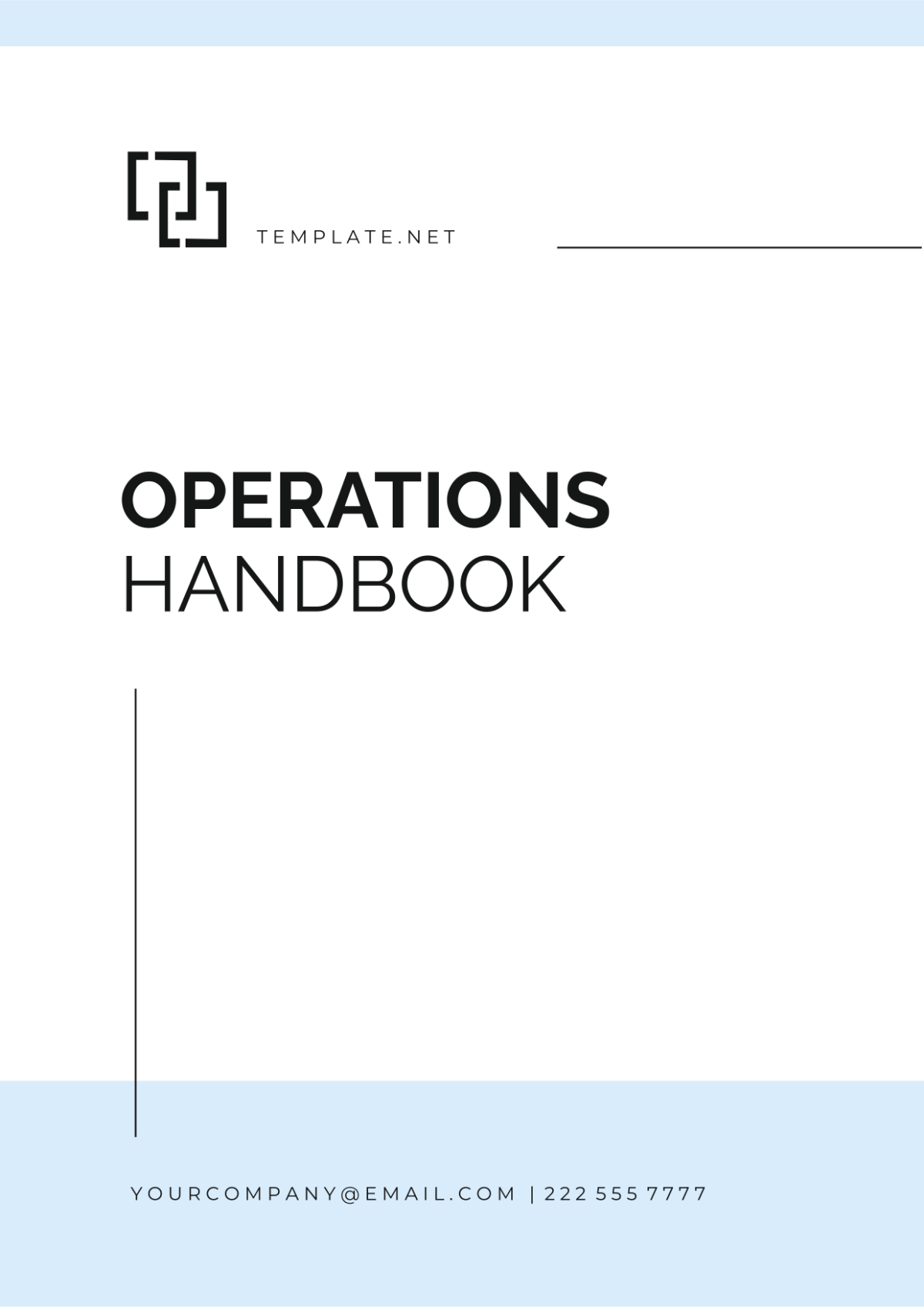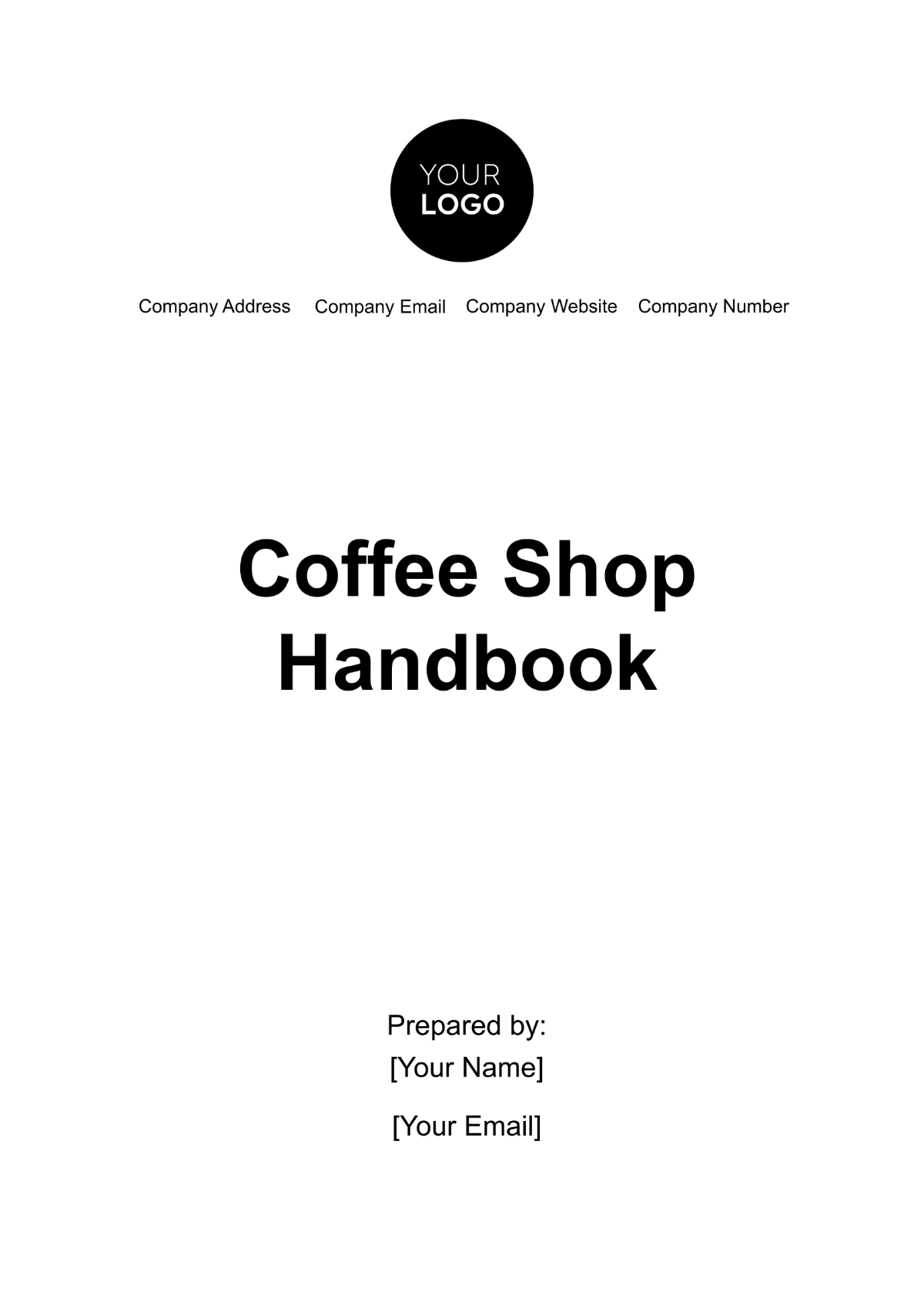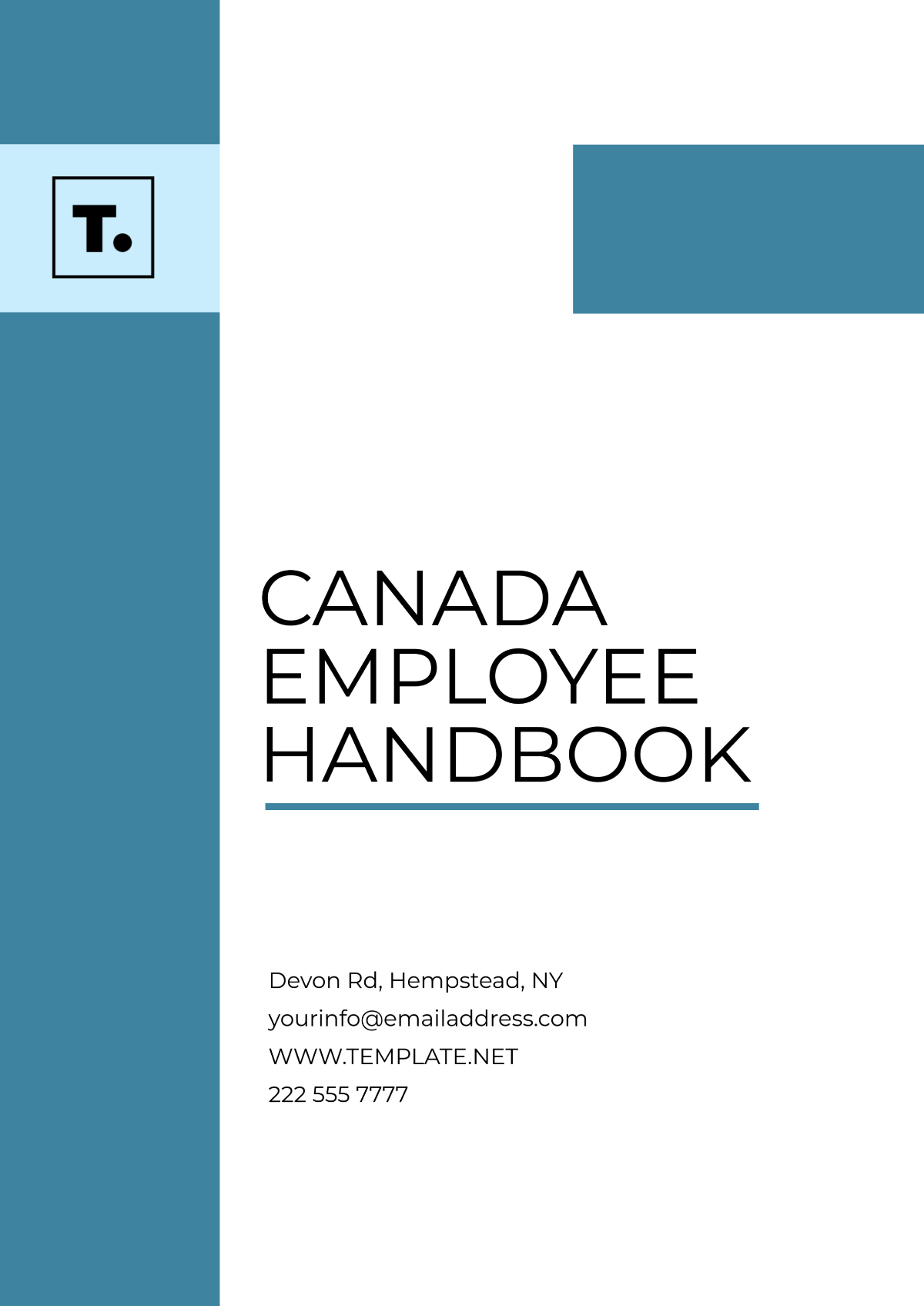Sales Handbook For Event Participants
Introduction
Welcome to [Your Company Name]'s highly anticipated [Event Name]! This event is a culmination of our commitment to innovation, collaboration, and excellence in the industry. Designed to empower our participants with unparalleled opportunities, [Event Name] promises an immersive experience tailored to elevate your sales prowess and drive outstanding results.
At [Your Company Name], we understand that success thrives on knowledge, strategy, and execution. As such, [Event Name] stands as a platform to equip you with the tools, insights, and resources necessary to navigate the dynamic landscape of sales with confidence and finesse.
Sales Goals and Objectives
At [Your Company Name]'s [Event Name], our primary aim is to empower participants to achieve ambitious yet attainable sales objectives. The following goals and objectives have been strategically formulated to guide and measure your success throughout the event:
Quantitative Targets:
Revenue Goals: Attain [$10,0000,000] in sales during the event.
Lead Generation: Generate [10%] more leads than the previous comparable period.
Conversion Rates: Increase conversion rates by [20%] across targeted segments.
Qualitative Objectives:
Customer Engagement: Foster meaningful interactions resulting in [25%] increase in customer engagement.
Customer Satisfaction: Achieve a customer satisfaction rating of [20%] or higher based on post-sales interactions.
Brand Advocacy: Cultivate brand advocates through [100] of testimonials or referrals from satisfied customers.
Skill Enhancement:
Sales Technique Mastery: Enhance participants' proficiency in industry standard sales techniques by providing hands-on training and workshops.
Product/Service Knowledge: Ensure comprehensive understanding and fluency in communicating [Your Company Name]'s offerings, resulting in [10%] improvement in product/service knowledge assessments.
Networking and Collaboration:
Partnership Development: Initiate [100] of potential partnerships or collaborations during the event.
Networking Effectiveness: Expand personal networks by engaging with [200] of industry leaders or prospective clients.
Target Audience and Buyer Personas
Understanding our audience is pivotal. Our target personas encompass [describe briefly the main demographics, behaviors, and pain points], seeking [mention their primary goals]. By recognizing their challenges and aspirations, we align our sales approach to resonate with their needs, ensuring our offerings provide solutions that cater to their specific requirements.
Effective Communication and Pitching
Mastering communication is pivotal. Tailor your pitch to resonate with clients, emphasizing value in concise, engaging language. Active listening and empathy build rapport, ensuring genuine connections. Address objections gracefully, highlighting solutions. Craft compelling stories to illustrate benefits, fostering memorable interactions.
Sales Tools and Resources
Customer Relationship Management (CRM) Software: Centralizes customer data, interactions, and sales pipelines, facilitating efficient management and nurturing of leads.
Sales Enablement Platforms: Equips sales teams with a centralized hub for accessing collateral, training materials, and real-time insights, aiding in effective selling.
Email Automation Software: Streamlines outreach by automating personalized email sequences, allowing for timely follow-ups and nurturing leads at scale.
Presentation and Demonstration Tools: Dynamic tools for creating visually engaging presentations and interactive demos, aiding in persuasive pitches and showcasing product features effectively.
Analytics and Reporting Tools: Provides actionable insights into sales performance, customer behavior, and pipeline metrics, enabling data-driven decision-making and strategy optimization.
Lead Generation and Qualification
Targeted Outreach: Engage potential leads through tailored campaigns and outreach methods aligned with their demographics and interests.
Data-Driven Strategies: Utilize analytics and market insights to identify high-potential leads, focusing efforts on prospects showing genuine interest.
Personalized Interactions: Establish meaningful connections by addressing specific pain points and offering tailored solutions during initial interactions.
Qualifying Criteria: Implement clear parameters to assess lead quality, ensuring alignment with ideal customer profiles and buying intent.
Prioritization: Allocate resources towards leads demonstrating the highest potential for conversion, optimizing time and effort for maximum impact.
Closing Techniques
Closing techniques are pivotal in sealing deals effectively. Trial closes, subtly probing for readiness, ascertain customer interest. Employing an assumptive close, assuming the sale's certainty, prompts decision-making momentum. Urgency creation through limited-time offers stimulates immediate action.
Offering alternatives nudges prospects towards a decision, while a summary close reinforces benefits and agreements. Lastly, the silent close allows space for contemplation, encouraging prospects to articulate their stance. Each technique, strategically applied, guides prospects towards the final step of commitment.
Follow-Up and Relationship Building
Nurture connections post-interaction with timely, personalized follow-ups, fostering trust and rapport. Share valuable insights or resources, reaffirming commitment to meeting their needs. Consistent engagement through various channels reinforces relationships, ensuring sustained rapport and fostering long-term loyalty.
Performance Tracking and Metrics
KPI | Description |
|---|---|
Sales Revenue | Total income generated from sales within a specific period. |
Conversion Rate | Percentage of leads that result in successful sales. |
Sales Growth | Rate of increase in sales revenue over time. |
Average Deal Size | Average value of each sale closed. |
Lead-to-Customer Ratio | Ratio of leads converted into paying customers. |
Sales Cycle Length | Time taken from initial contact to closing a sale. |
Customer Acquisition Cost (CAC) | Expenses incurred to acquire a new customer. |
Customer Lifetime Value (CLV) | Total revenue generated from a customer over their lifetime as a customer. |
Sales Pipeline Velocity | Rate at which prospects move through the sales pipeline. |
Activity Metrics | Number of calls, meetings, or emails made by sales representatives. |
Monitoring these metrics provides insights into sales performance, enabling informed decision-making and strategy adjustments for improved outcomes.
FAQs and Troubleshooting
What if a prospect raises objections during a pitch?
Address objections empathetically, acknowledging concerns, and offering tailored solutions or case studies that resolve doubts.
How can I handle a situation where a lead goes unresponsive after initial interest?
Implement a structured follow-up plan, varying communication methods and timing, ensuring persistence without being pushy.
What if a prospect requests more detailed product/service information than provided?
Direct them to additional resources, such as whitepapers, webinars, or arrange a follow-up meeting with a specialist to cater to specific queries.
How do I approach a prospect who seems interested but is hesitant to commit?
Employ a consultative approach, understanding their reservations, and offering personalized insights or trial periods to alleviate concerns.
How can I re-engage with prospects who haven't shown interest recently?
Craft a re-engagement strategy, sharing new offerings, updates, or success stories to reignite their interest.
Legal and Compliance Information
Privacy Policy and Data Handling: Details on how customer data is collected, stored, and used in compliance with data protection regulations.
Terms of Service or Sales Agreement: Clarification on the terms governing the sales transaction, including warranties, liabilities, and terms of use.
Compliance with Industry Standards: Assurance of adherence to industry-specific regulations and standards relevant to the products/services offered.
Refund and Return Policies: Explanation of policies regarding refunds, returns, or cancellations, ensuring transparency in customer dealings.
Intellectual Property Rights: Information about the protection of intellectual property, trademarks, copyrights, and permissions related to product usage or distribution.
Regulatory Compliance Statements: Statements affirming compliance with relevant laws, industry guidelines, and ethical business practices.
Join us on this transformative journey during [Event Name], where innovation meets expertise, and together, we'll unlock the full potential of your sales capabilities. Thank you for being a part of [Your Company Name]'s [Event Name]!

















































